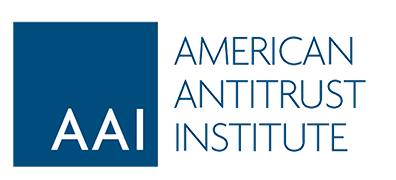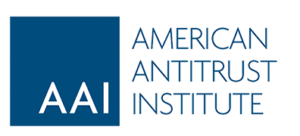In this episode, AAI Vice President of Policy Laura Alexander discusses third-party litigation funding and its impact on private antitrust class actions with two experts in the field, one of the country’s foremost litigators of antitrust class actions and a representative from a leading litigation funder with deep experience in antitrust. Antitrust class actions are expensive to bring and prosecute. Historically, plaintiffs’ lawyers have used their own assets and traditional bank loans to finance them, in a high-risk/high-reward business model. In the last decade, however, an alternative funding model has emerged: litigation funding firms have begun financing plaintiff-side antitrust litigation for profit using non-recourse debt, shifting risk and reward from the lawyers to the funders and, in the process, changing the landscape of private antitrust litigation and class actions. The conversation starts with a primer on litigation funding, and goes on to discuss how funding decisions factor into leadership and settlement dynamics, how litigation funding impacts which cases are brought and who brings them, and how monetization of claims is changing incentives for opt outs and what that might portend for class actions. Finally, the episode concludes with an analysis of the different role that litigation funding plays in collective actions abroad, and what lessons we might draw from foreign jurisdictions for funding class actions in the U.S.
 Bill Isaacson is a partner in the Litigation Department at Paul Weiss and widely considered one of the preeminent litigators of his generation. A Fellow in the American College of Trial Lawyers, Bill was named “Litigator of the Year” in 2016 by The American Lawyer. Bill has tried cases in a number of areas, including contract, commercial torts, copyright, international arbitration and antitrust. In antitrust, Bill has successfully represented both plaintiffs and defendants in major antitrust litigations; of the approximately dozen federal antitrust class actions that have gone to trial and judgment in this century, he has tried five of them, winning verdicts in each case.
Bill Isaacson is a partner in the Litigation Department at Paul Weiss and widely considered one of the preeminent litigators of his generation. A Fellow in the American College of Trial Lawyers, Bill was named “Litigator of the Year” in 2016 by The American Lawyer. Bill has tried cases in a number of areas, including contract, commercial torts, copyright, international arbitration and antitrust. In antitrust, Bill has successfully represented both plaintiffs and defendants in major antitrust litigations; of the approximately dozen federal antitrust class actions that have gone to trial and judgment in this century, he has tried five of them, winning verdicts in each case.
 Dai Wai Chin Feman is the Director of Commercial Litigation Strategies at litigation funding firm Parabellum Capital. Recognized as one of 100 global leaders in legal finance by LawDragon, Dai Wai is a frequent speaker and writer on cutting-edge issues in the litigation finance industry. Dai Wai is a member of the US Regional Committee of the International Legal Finance Association, served as one of two industry members of the New York City Bar Association’s Litigation Funding Working Group, is a member of the New York City Bar Association’s Professional Ethics Committee, and participated on the Uniform Law Commission’s Third-Party Funding of Litigation Study Committee. Prior to joining Parabellum, Dai Wai was a litigation partner at Dorsey & Whitney LLP, where he specialized in commercial and antitrust litigation.
Dai Wai Chin Feman is the Director of Commercial Litigation Strategies at litigation funding firm Parabellum Capital. Recognized as one of 100 global leaders in legal finance by LawDragon, Dai Wai is a frequent speaker and writer on cutting-edge issues in the litigation finance industry. Dai Wai is a member of the US Regional Committee of the International Legal Finance Association, served as one of two industry members of the New York City Bar Association’s Litigation Funding Working Group, is a member of the New York City Bar Association’s Professional Ethics Committee, and participated on the Uniform Law Commission’s Third-Party Funding of Litigation Study Committee. Prior to joining Parabellum, Dai Wai was a litigation partner at Dorsey & Whitney LLP, where he specialized in commercial and antitrust litigation.




